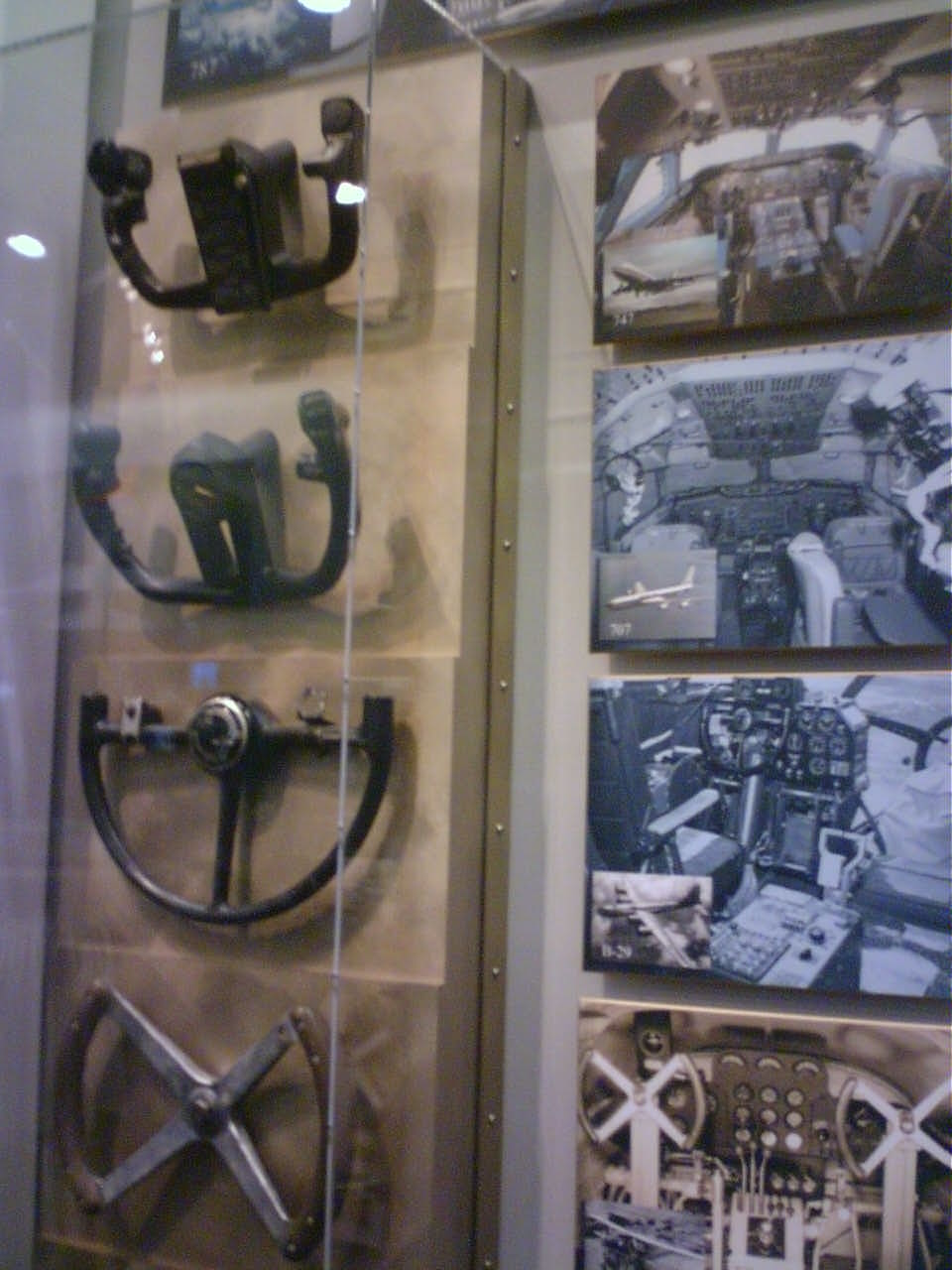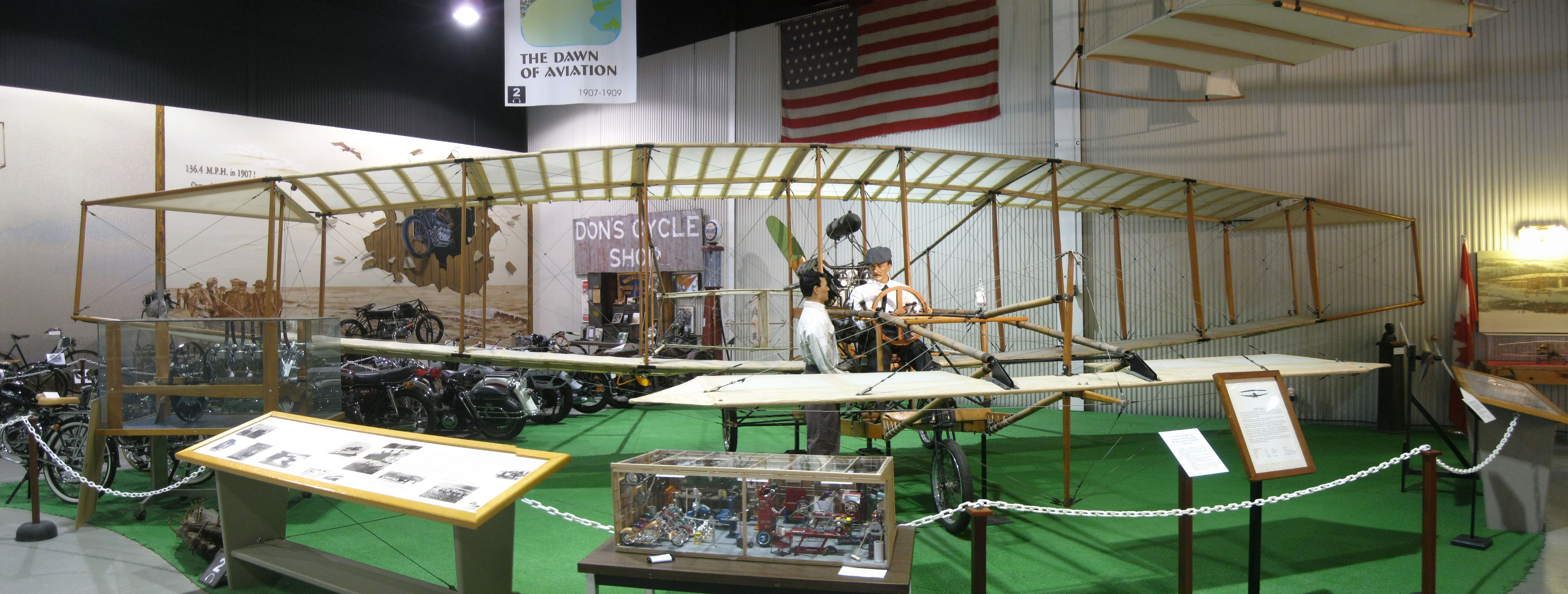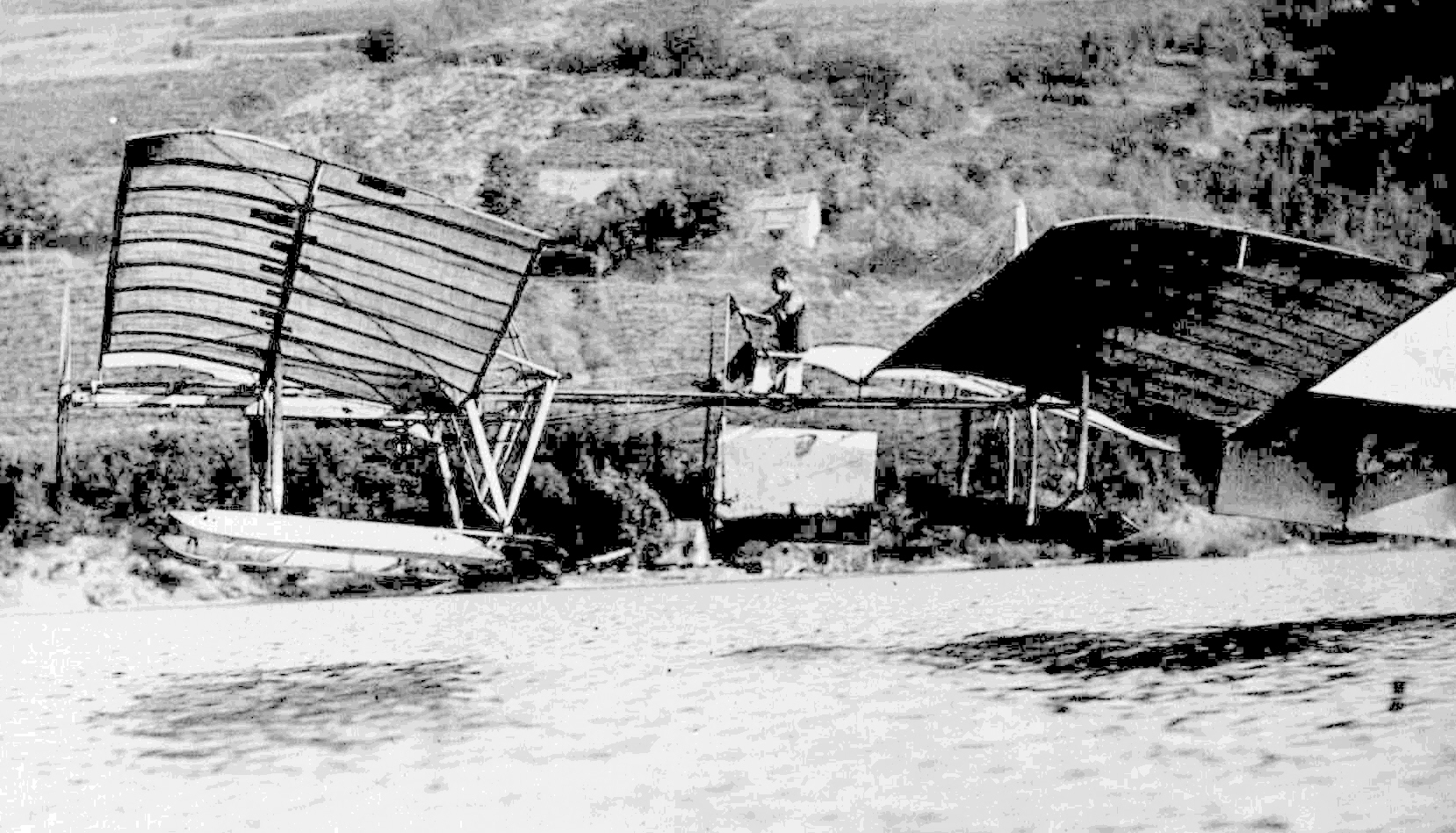|
Elevator (aeronautics)
Elevators are flight control surfaces, usually at the rear of an aircraft, which control the aircraft's flight dynamics, pitch, and therefore the angle of attack and the lift of the wing. The elevators are usually hinged to the tailplane or horizontal stabilizer (aircraft), stabilizer. They may be the only pitch control surface present, and are sometimes located at the front of the aircraft (early airplanes and canard (aeronautics), canards) or integrated into a rear "all-moving tailplane", also called a slab elevator or stabilator. Elevator control effectiveness The elevator is a usable up and down system that controls the plane, horizontal stabilizer usually creates a ''downward'' force which balances the nose down moment (physics), moment created by the wing lift force, which typically applies at a point (the wing center of lift) situated aft of the airplane's center of gravity. The effects of drag (physics), drag and changing the engine thrust may also result in pitch mome ... [...More Info...] [...Related Items...] OR: [Wikipedia] [Google] [Baidu] |
Aileron Pitch
An aileron (French for "little wing" or "fin") is a hinged flight control surface usually forming part of the trailing edge of each wing of a fixed-wing aircraft. Ailerons are used in pairs to control the aircraft in Flight dynamics, roll (or movement around the aircraft's Flight control surfaces#Longitudinal axis, longitudinal axis), which normally results in a change in flight path due to the tilting of the Lift (force), lift vector. Movement around this axis is called rolling or banking. Considerable controversy exists over credit for the invention of the aileron. The Wright brothers and Glenn Curtiss fought a years-long Wright brothers patent war, legal battle over the Wright patent of 1906, which described a method of wing-warping to achieve lateral control. The brothers prevailed in several court decisions which found that Curtiss's use of ailerons violated the Wright patent. Ultimately, the World War I, First World War compelled the U.S. Government to legislate a legal r ... [...More Info...] [...Related Items...] OR: [Wikipedia] [Google] [Baidu] |
Control Column
A yoke, alternatively known as a control wheel or a control column, is a device used for Pilot (aeronautics), piloting some fixed-wing aircraft.Crane, Dale: ''Dictionary of Aeronautical Terms, third edition'', page 563. Aviation Supplies & Academics, 1997. . The aviator, pilot uses the yoke to control the Aircraft attitude, attitude of the plane, usually in both pitch and Flight dynamics, roll. Rotating the control wheel controls the ailerons and the roll axis. Fore and aft movement of the control column controls the Elevator (aircraft), elevator and the pitch axis. When the yoke is pulled back, the nose of the aircraft rises. When the yoke is pushed forward, the nose is lowered. When the yoke is turned left, the plane rolls to the left, and when it is turned to the right, the plane rolls to the right. Small to medium-size aircraft, usually limited to propeller-driven, feature a mechanical system whereby the yoke is connected directly to the control surfaces with cables a ... [...More Info...] [...Related Items...] OR: [Wikipedia] [Google] [Baidu] |
Grumman X-29
The Grumman X-29 is an American experimental aircraft that tested a forward-swept wing, canard control surfaces, and other novel aircraft technologies. Funded by NASA, the United States Air Force and DARPA, the X-29 was developed by Grumman, and the two built were flown by NASA and the United States Air Force. The aerodynamic instability of the X-29's airframe required the use of computerized fly-by-wire control. Composite materials were used to control the aeroelastic divergent twisting experienced by forward-swept wings, and to reduce weight. The aircraft first flew in 1984, and two X-29s were flight tested through 1991. Design and development Two X-29As were built by Grumman after the proposal had been chosen over a competing one involving a General Dynamics F-16 Fighting Falcon. The X-29 design made use of the forward fuselage and nose landing gear from two existing F-5A Freedom Fighter airframes (63-8372 became 82-0003 and 65-10573 became 82-0049). The control surface a ... [...More Info...] [...Related Items...] OR: [Wikipedia] [Google] [Baidu] |
AEA June Bug
The ''June Bug'' was an American Aviation in the pioneer era, "pioneer era" biplane built by the Aerial Experiment Association (A.E.A) in 1908 and flown by Glenn Curtiss, Glenn Hammond Curtiss. The aircraft was the first American airplane to fly at least 1 km in front of a crowd. Design and development A ''Scientific American'' competition in 1907 offered a solid silver sculpted trophy, and $25,000 in cash, to be awarded to whoever made the first public flight of over 1 kilometer (3,280 ft) in an American aircraft. In 1907, Glenn Curtiss and the Aerial Experiment Association began building the ''June Bug'' with hopes of winning the Scientific American Cup. The ''June Bug,'' also referred to as ''Aerodrome #3'' (the third powered airplane built by the A.E.A), included the previously used aileron steering system, but a shoulder Yoke (aeronautics), yoke made it possible for the pilot to steer by leaning from side to side. The aircraft featured a Canard (aeronautics), cana ... [...More Info...] [...Related Items...] OR: [Wikipedia] [Google] [Baidu] |
Three Surface Aircraft
A three-surface aircraft or sometimes three-lifting-surface aircraft has a foreplane, a central wing and a tailplane. The central wing surface always provides lift and is usually the largest, while the functions of the fore and aft planes may vary between types and may include lift, control and/or stability. In civil aircraft the three surface configuration may be used to give safe stalling characteristics and short takeoff and landing (STOL) performance. It is also claimed to allow minimizing the total wing surface area, reducing the accompanying skin drag. In combat aircraft this configuration may also be used to enhance maneuverability both before and beyond the stall, often in conjunction with vectored thrust. History An early designation used in 1911 was "three plane system". The Fernic designs of the 1920s were referred to as "tandem". While there are indeed two lifting wing surfaces in tandem, the tailplane forms a third horizontal surface. Pioneer experiments Durin ... [...More Info...] [...Related Items...] OR: [Wikipedia] [Google] [Baidu] |
Rutan Quickie
The Rutan Model 54 Quickie is a lightweight single-seat taildragger aircraft of composite construction, configured with tandem wings. The Quickie was primarily designed by Burt Rutan as a low-powered, highly efficient kit-plane. Its tandem wing design has one anhedral forward wing and one slightly larger dihedral rear wing. The forward wing has full-span control surfaces and is thus similar to a canard wing, but is considerably larger. The aircraft has unusual landing gear, with the main wheels located at the tips of the forward wing. Design and development The Quickie Aircraft Corporation was formed to produce and market the Quickie in kit form after 1978. Two years later a two-seater variant of the same layout followed as the Q2. The original ''Quickie'' (Model 54 in Rutan's design series) is one of several unconventional aircraft penned by Rutan for the general aviation market. The Quickie followed from Jewett and Sheehan's intention in 1975 for a low-cost, low-po ... [...More Info...] [...Related Items...] OR: [Wikipedia] [Google] [Baidu] |
Mignet Pou-du-Ciel
The Flying Flea () is a large family of light homebuilt aircraft first flown in 1933. The odd name comes from the French nickname for the Ford Model T automobile: ''Pou de la Route'', or "Louse of the Road", because Henry Ford's economy car was so common. Henri Mignet dreamed of creating a Model T of the air, an airplane for the common man, hence the term ''Pou du Ciel''. In English, the term became Flying Flea. Originally applied only to the HM.14 model, the name has now come to describe the family of aircraft of similar configuration designed by Mignet and others. Development The Flying Flea family of aircraft was designed by Frenchman Henri Mignet.Plane and Pilot (1977), p. 142 Between 1920 and 1928, Mignet built various prototypes from the HM.1 to the HM.8, a monoplane that was the first of his designs that really flew. Instructions for building the HM.8 Avionnette were published by Mignet in a self-published book—he hand wrote the text and drawings, created photog ... [...More Info...] [...Related Items...] OR: [Wikipedia] [Google] [Baidu] |
Wright Brothers
The Wright brothers, Orville Wright (August 19, 1871 – January 30, 1948) and Wilbur Wright (April 16, 1867 – May 30, 1912), were American aviation List of aviation pioneers, pioneers generally credited with inventing, building, and flying the world's first successful airplane. They made the first controlled, sustained flight of an engine-powered, Aircraft#Heavier-than-air – aerodynes, heavier-than-air aircraft with the ''Wright Flyer'' on December 17, 1903, four miles (6 km) south of Kitty Hawk, North Carolina, at what is now known as Kill Devil Hills, North Carolina, Kill Devil Hills. In 1904 the Wright brothers developed the ''Wright Flyer II'', which made longer-duration flights including the first circle, followed in 1905 by the first truly practical fixed-wing aircraft, the ''Wright Flyer III''. The brothers' breakthrough invention was their creation of a Flight dynamics (aircraft), three-axis control system, which enabled the pilot to steer the aircraft effec ... [...More Info...] [...Related Items...] OR: [Wikipedia] [Google] [Baidu] |
Tandem Wing
QAC Quickie Q2 A tandem wing is a wing configuration in which a flying craft or animal has two or more sets of wings set one behind another. All the wings contribute to lift. The tandem wing is distinct from the biplane in which the wings are stacked one above another, or from the canard or "tail-first" configuration where the forward surface is much smaller and does not contribute significantly to the overall lift. In aviation, tandem wings have long been experimented with, but few designs have ever been put into production. Tandem wings in nature occur only in insects and flying fish, although in the past there have been tandem-wing flying reptiles. Design principles A tandem wing configuration has two main wing planes, with one located forward and the other to the rear. The difference is greater than the wing chord, so there is a clear gap between them and the aircraft centre of gravity (CG) lies between the wings.Bottomley (1977) Compared to the conventional layout, whe ... [...More Info...] [...Related Items...] OR: [Wikipedia] [Google] [Baidu] |
Duck
Duck is the common name for numerous species of waterfowl in the family (biology), family Anatidae. Ducks are generally smaller and shorter-necked than swans and goose, geese, which are members of the same family. Divided among several subfamilies, they are a form taxon; they do not represent a monophyletic group (the group of all descendants of a single common ancestral species), since swans and geese are not considered ducks. Ducks are mostly aquatic birds, and may be found in both fresh water and sea water. Ducks are sometimes confused with several types of unrelated water birds with similar forms, such as loons or divers, grebes, gallinules and coots. Etymology The word ''duck'' comes from Old English 'diver', a derivative of the verb 'to duck, bend down low as if to get under something, or dive', because of the way many species in the dabbling duck group feed by upending; compare with Dutch language, Dutch and German language, German 'to dive'. This word replaced ... [...More Info...] [...Related Items...] OR: [Wikipedia] [Google] [Baidu] |
French Language
French ( or ) is a Romance languages, Romance language of the Indo-European languages, Indo-European family. Like all other Romance languages, it descended from the Vulgar Latin of the Roman Empire. French evolved from Northern Old Gallo-Romance, a descendant of the Latin spoken in Northern Gaul. Its closest relatives are the other langues d'oïl—languages historically spoken in northern France and in southern Belgium, which French (Francien language, Francien) largely supplanted. It was also substratum (linguistics), influenced by native Celtic languages of Northern Roman Gaul and by the Germanic languages, Germanic Frankish language of the post-Roman Franks, Frankish invaders. As a result of French and Belgian colonialism from the 16th century onward, it was introduced to new territories in the Americas, Africa, and Asia, and numerous French-based creole languages, most notably Haitian Creole, were established. A French-speaking person or nation may be referred to as Fra ... [...More Info...] [...Related Items...] OR: [Wikipedia] [Google] [Baidu] |
Elevon
Elevons or tailerons are aircraft control surfaces that combine the functions of the elevator (used for pitch control) and the aileron (used for roll control), hence the name. They are frequently used on tailless aircraft such as flying wings. An elevon that is not part of the main wing, but instead is a separate tail surface, is a stabilator (but stabilators are also used for pitch control only, with no roll function, as on the Piper Cherokee series of aircraft). Elevons are installed on each side of the aircraft at the trailing edge of the wing. When moved in the same direction (up or down) they will cause a pitching force (nose up or nose down) to be applied to the airframe. When moved differentially, (one up, one down) they will cause a rolling force to be applied. These forces may be applied simultaneously by appropriate positioning of the elevons e.g. one wing's elevons completely down and the other wing's elevons partly down. An aircraft with elevons is controlle ... [...More Info...] [...Related Items...] OR: [Wikipedia] [Google] [Baidu] |








